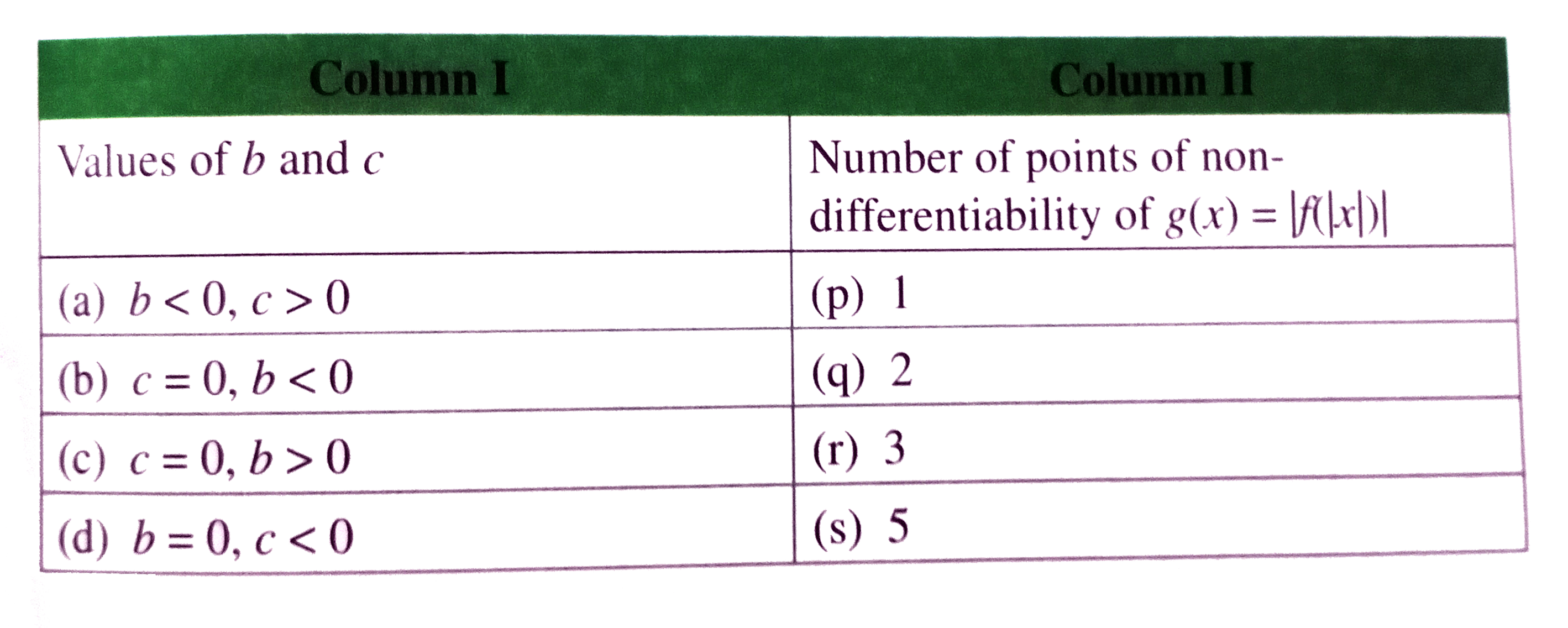The function f(x)=x2+bx+c, where b and c real constants, describes Solution in Bengali
one-to-one mapping
onto mapping
not one-to-one but onto mapping
neither one-to-one nor onto mapping
Step by step video & image solution for The function f(x)=x^(2)+bx+c, where b and c real constants, describes by Maths experts to help you in doubts & scoring excellent marks in Class 12 exams.
Updated on:21/07/2023Topper's Solved these Questions
Similar Questions
A point P lies on the circle x2+y2=169. If Q=(5,12) and R=(−12,5), then the angle ∠QPR is
View SolutionIn a certain town, 60% of the families own a car, 30% own a house and 20% own both a car and a house. If a family is randomly chosen, what is the probability that this family owns a car or a house but not both?
View SolutionLet f(x)=ax^(2)+bx+c where a,b and c are real constants.If f(x+y)=f(x)+f(y) for all real x and y, then
View Solutioncondition that f(x)=x^(3)+ax^(2)+bx^(2)+c is anincreasing function for all real values of x' is
View SolutionConsider the quadratic function f(x)=ax^(2)+bx+c where a,b,c in R and a!=0, such that f(x)=f(2-x) for all real number x. The sum of the roots of f(x) is
View SolutionConsider the function f(x)=x2+bx+c, where D=b2−4c>0, then match the follwoing columns.

View SolutionLet f(x)=a+b|x|+c|x|2, where a,b,c are real constants. The, f'(0) exists if
View SolutionThe function f(x)=x2+bx+c, where b and c are real constants, describes
View SolutionLet f(x)=Ax2+Bx+C where A, B, C are three real constants, if f(x) is integer for integral values of x, then prove that each of 2A, (A+B) and C is an integer. Conversely, if each of 2A, (A+B) , C is an integer then f(x) will be integer for integral values of x.
View SolutionIf f(x)=x3+ax2+bx+c is an increasing function for all real values of x then-
View SolutionThe function f(x)=x2+bx+c , where b and c are real constants , decribes -
View Solutionf(x)=x2+bx+c অপেক্ষক যেখানেb এবং cবাস্তব ধ্রুবক―
View SolutionIf (1+2i) is a root of the equation x2+bx+c=0. Where b and c are real, then (b,c) is given by :
View SolutionConsider the function f(x)=x2+bx+c, where D=b2−4c>0, then match the follwoing columns.

View Solutionप्रथम सिद्धांत की सहायता से f(x)=ax2+bx+c का अवकलज ज्ञात कीजिये जहा, a,b,c शून्येतर अचर है।
View Solution
